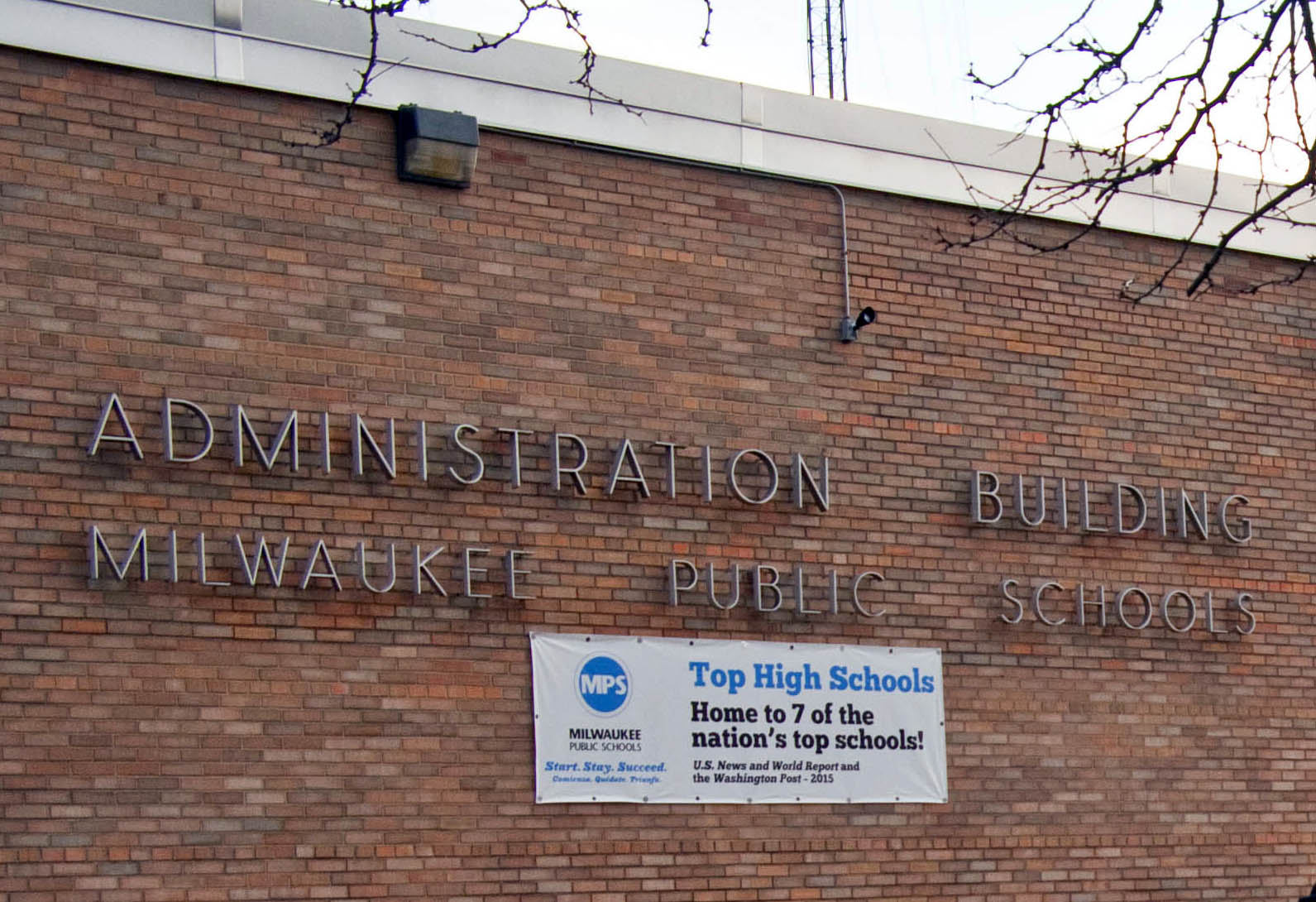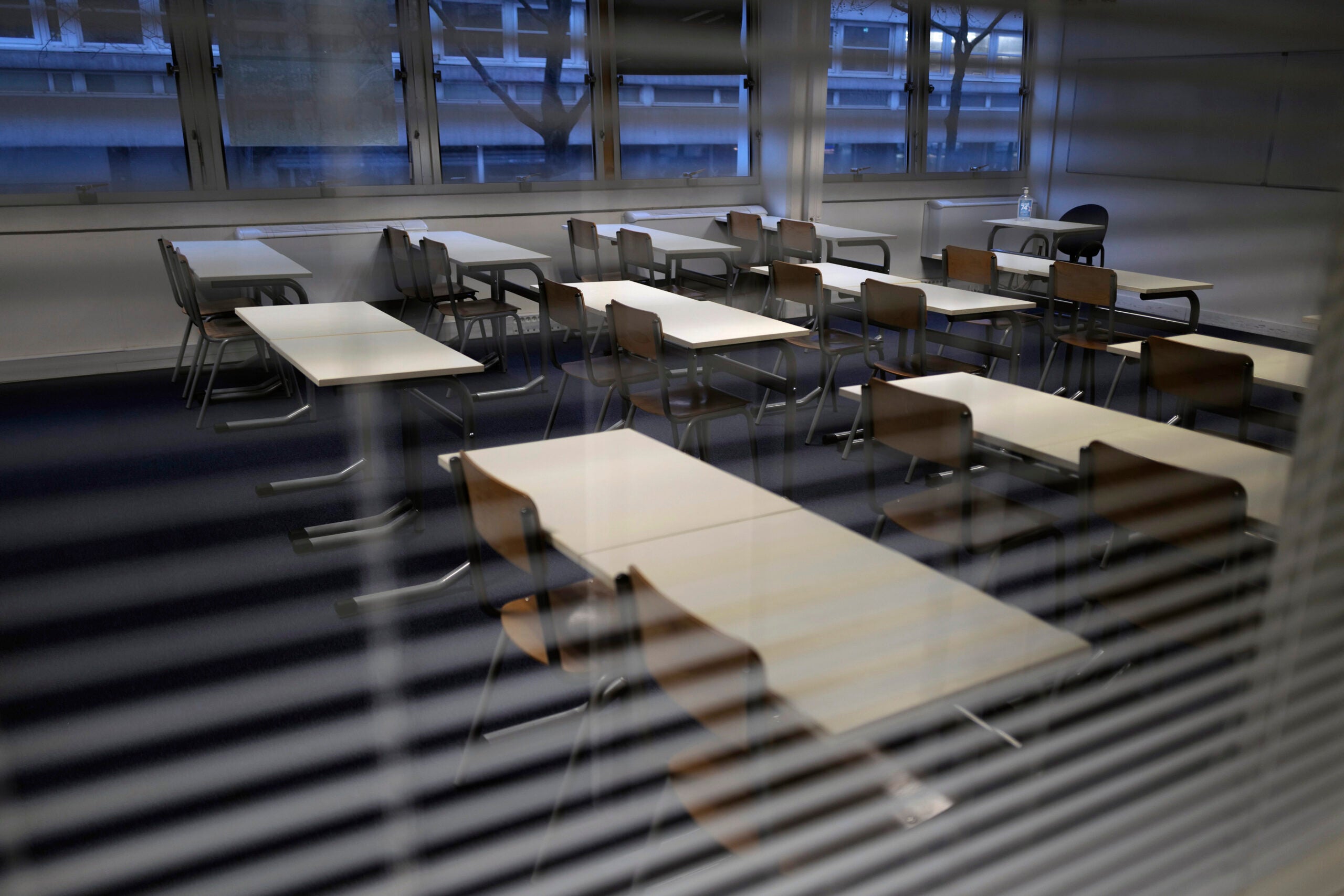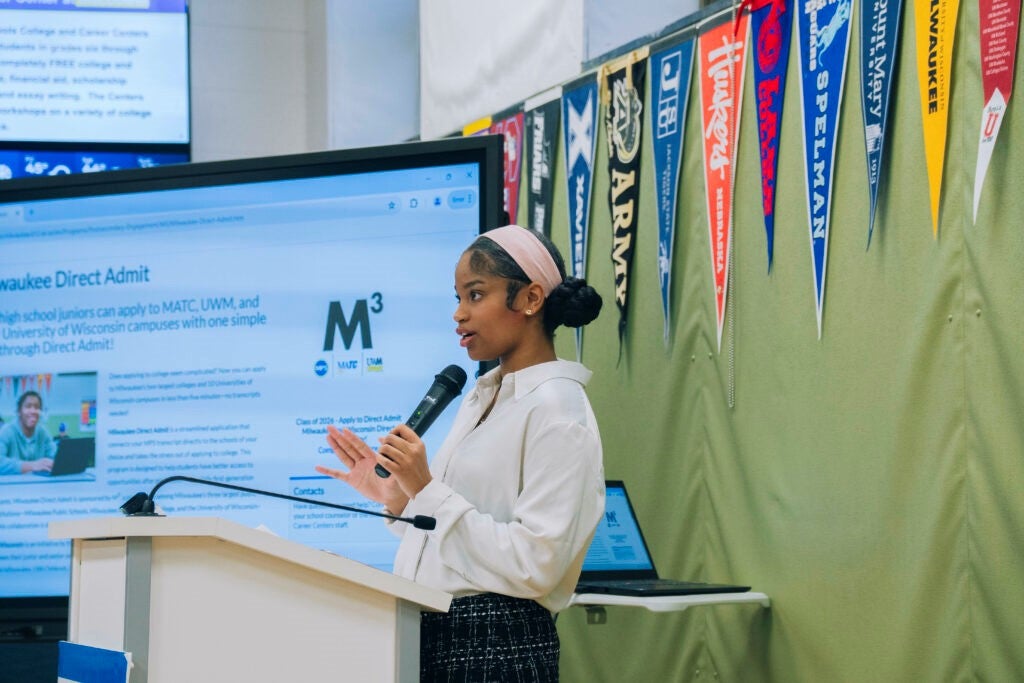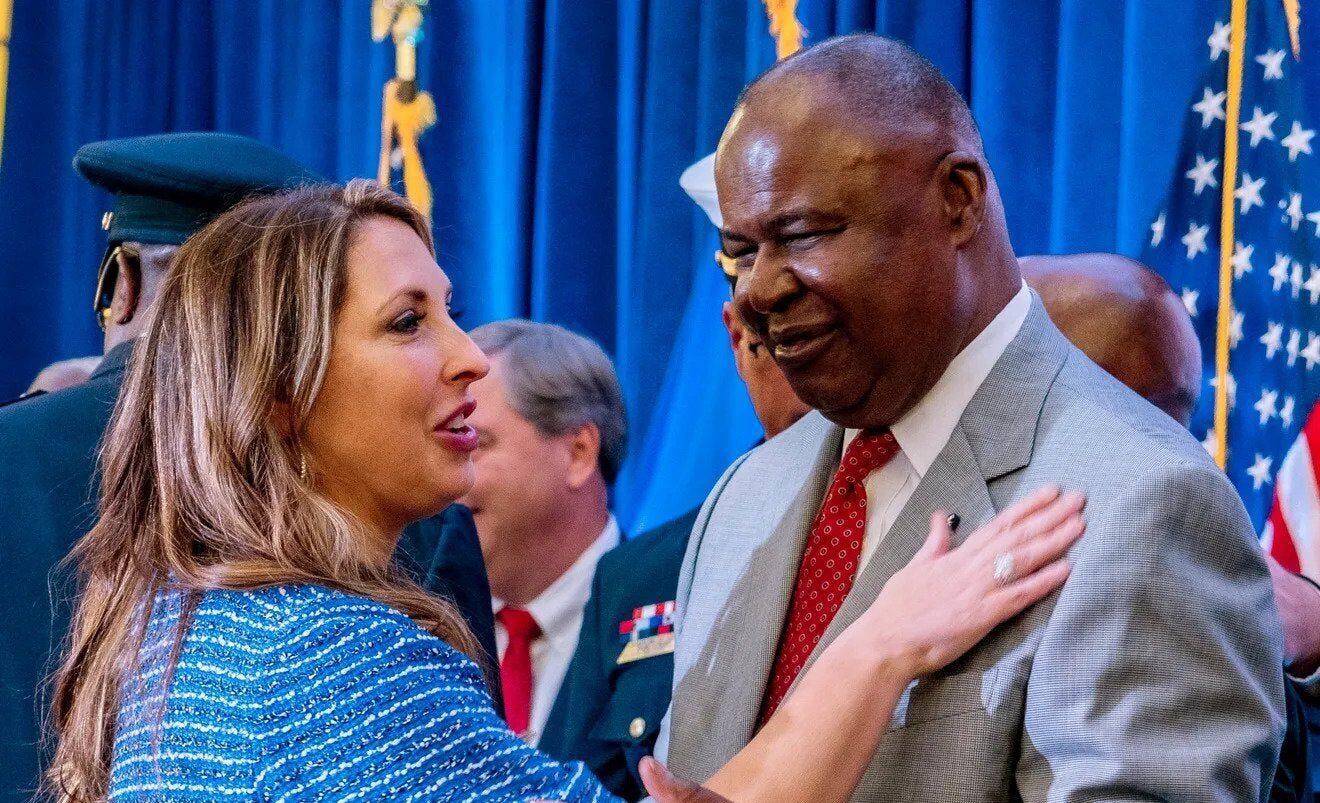Nearly 16,000 students have been suspended in Milwaukee Public Schools so far this school year, with Black students making up about 80 percent of the suspensions.
That’s compared to just 2.5 percent of suspensions for white students, according to data presented to the Milwaukee Board of School Directors this week.
Just under 50 percent of the district’s 67,495 students are Black. Twenty-eight percent are Hispanic and 9 percent are white.
Stay informed on the latest news
Sign up for WPR’s email newsletter.
About 14 percent of students who have been suspended so far this school year are Hispanic, according to MPS data.
Jon Jagemann, district discipline manager, said total suspensions in MPS are up 6.9 percent through February, or by about 900 total suspensions.
Those numbers could include students who have had more than one suspension, Jagemann said during Tuesday’s Committee on Parent and Community Engagement meeting.
Jagemann did not respond to further questions from WPR.
Administrators have given monthly suspension updates since September 2020, following an investigation by the U.S. Department of Education’s Office of Civil Rights that found MPS had disproportionately suspended or expelled Black students.
After Tuesday’s report, board member Henry Leonard asked for a “bird’s eye view of recidivism.”
He said that would give the board a better understanding of suspension rates.
“We’re not looking for names, we’re not looking to point out buildings, we’re looking to show how many students actually commit offenses that are suspendable,” Leonard said. “To give us a much better or clearer picture of what we’re really looking at.”
Long-term effects of suspensions unknown
Multiple studies have found suspensions are ineffective in most cases. Restorative justice practices, such as counseling or mediation, are more successful.
The American Institutes for Research studied exclusionary discipline, including suspensions, at New York City middle and high schools from 2009 to 2018. They found the punishments did not reduce misbehavior or result in improved academic achievement.
AIR Institute Fellow David Osher, who co-authored a study about the data in 2021, said educators have very little information about the-long term consequences of their decisions related to suspension, and many believe it is a necessary response to make the school safer and more conducive for learning.
“But the results of our research, and related research on suspensions and the science of learning development, suggest these practices may be harming students’ long-term educational success and do not have a positive effect on the school community,” Osher said.
In MPS, suspension is a level 2 punishment, coming after a student has had a meeting with their teacher or administrator regarding their behavior.
A student can be suspended for physically harming another person, extortion, a false fire alarm, gambling, hazing, stealing or possessing a controlled substance, according to the student hand book.
Data from the district shows the majority of suspensions are in middle school and early high school, with seventh, eighth and 10th grade each having just over 2,000 suspensions. Ninth grade had the most students suspended at 4,162.
But the number of younger children being suspended has also risen, particularly in fourth and fifth grade.
About 100 children in both pre-kindergarten and first grade have been suspended.
Innovative strategies working at Roosevelt Middle School
Unlike the rest of the school district, suspensions are down 58 percent at Roosevelt Middle School, located in Milwaukee’s Brownsville community on the city’s north side.
Fighting incidents at the school are down 40 percent and disorderly conduct down 33 percent, according to Principal Tiffany Fisher.
Nearly 90 percent of children at the 302-student school are Black.
Fisher said she has worked hard to turn around her school by using restorative justice methods.
A recent incident involved about a dozen girls who had an ongoing conflict with each other over social media outside of school that was seeping into the classroom.
“It could have easily yielded, with the repeat behaviors, about 10 suspensions,” Fisher said. “But we chose, with the help of our support staff, our trauma specialists and our assistant principal, to get all the parents to come in.”
The school even sent Ubers to homes where parents didn’t have transportation, to make sure everyone was involved.
The group worked with Running Rebels, a community organization that mentors youth. They sat in a circle and saw each other as humans instead of objectifying each other on social media, Fisher said.
“So this was really successful, it got the students to finish out the rest of their day and their week,” Fisher said.
Restorative circles, like the one the girls participated in are now scheduled twice a week for students.
“We do recognize that behaviors are escalating, that’s just the sign of the times, but we want them in school,” Fisher said. “We are the adults, we have to teach them. And we want to kind of stay ahead of the momentum.”
Wisconsin Public Radio, © Copyright 2025, Board of Regents of the University of Wisconsin System and Wisconsin Educational Communications Board.



